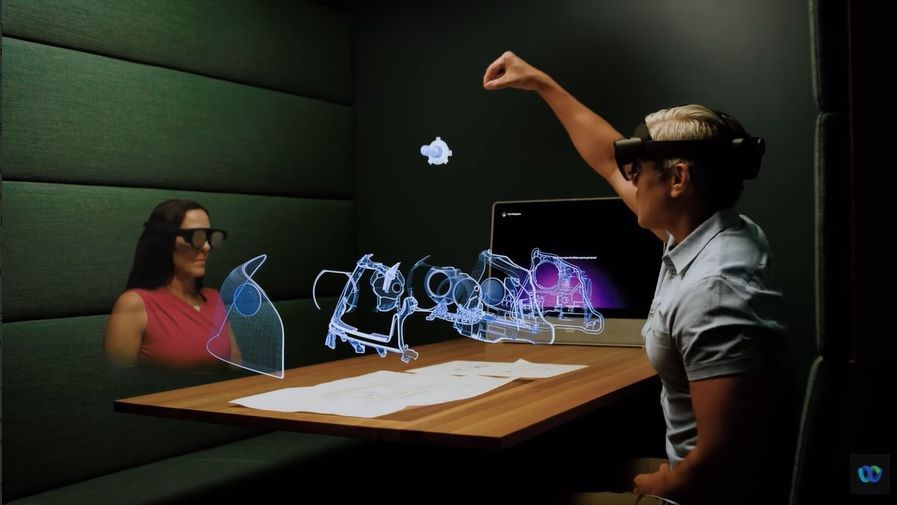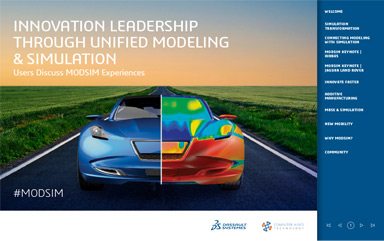
Webex Hologram takes advantage of AR headsets to combine Webex meeting functionality with immersive 3D holograms to facilitate design collaboration. Image Courtesy of Cisco
April 4, 2022
Supply chain issues, staffing shortages, and travel restrictions are among the many pandemic-era challenges hampering collaborative design and manufacturing. Webex Hologram, a real-time meeting solution that incorporates immersive 3D holograms, is being pitched as a novel way for manufacturers to keep up with design challenges and training initiatives without requirements for in-person collaboration.
Webex Hologram, which leverages augmented reality headsets, enables design engineers and non-engineers to interact in ways previously possible only with in-person interactions. Holograms help non-engineering users see finished parts in three dimensions from all angles of the part, exactly as if they had the actual part in hand. This new communications medium also facilitates the explanation of procedures or design innovations without the guesswork that comes with using 2D images to inform design-related interactions.
“This helps non-engineers readily ask more questions about the machining and assembly of parts,” notes Carlos Rojas, Cisco’s Global Manufacturing Lead. “It also enables designers to rapidly convey their designs to manufacturing, which in turn saves cycles of communications. Holograms may raise additional questions that may not have been asked before and therefore, enriches the collaboration between design, engineering, and manufacturing.”
One of the early users of the technology in a design capacity is McLaren Racing. The team is leveraging the technology to reimagine how they support design engineers, drivers, and crew, enabling them to collaborate, train on procedures, or show car components from every angle, cutting down on time inefficiencies and health risks associated with travel.
Given that McLaren Racing mans a global racing team of 1,000 people all around the world, getting engineers, designers, and technicians in one place is difficult, especially for crews stationed on the race tracks. With Webex Hologram, technicians on the track can collaborate with remote engineers and production staff to identify problems and participate in real-time active design using a holographic physical representation of the vehicle and its components. Their common goal: Getting the vehicle back on track as quickly as possible.
“Rather than flying a technician to the racing team or explaining procedures through flat images, with the Hologram technology, we can immediately show an engine component from every angle, convey sizing, and instruct on assembly and usage as if they were in person—all while saving countless hours in travel time,” said Zak Brown, CEO of McLaren Racing in a prepared release.
Another potential use case for Webex Hologram for McLaren is when a new part is shipped to the track for installation and it’s discovered that is doesn’t fit properly. “Now they can collaborate through Webex Hologram, working with a physical representation of both the vehicle and the part to figure out why it doesn’t fit,” Cisco’s Rojas explains. “They can determine what needs to change to complete installation.”
Cisco also positions Webex Hologram as a critical tool for dealing with talent shortages and less engineers on the factory floor, in part because of pandemic-induced shortages as well as a transition gap created by retiring employees and the newer generation workforce which is not quite up to speed.
“Hologram technology helps manufacturers fill that void by connecting their engineers and designers from anywhere in the world,” Rojas says. “It allows them to collaborate and interact with a three-dimensional representation of a physical object as if they were physically holding it.”
For more on how Webex Hologram works, check out this video.
More Cisco Systems Coverage
Subscribe to our FREE magazine, FREE email newsletters or both!
About the Author
Beth Stackpole is a contributing editor to Digital Engineering. Send e-mail about this article to [email protected].
Follow DE





